What to do when an artist has a few shows under their belt is a common quandary around the world and here in town. Pushing your own work is exhausting, and walking the tightrope between being forward-thinking and overbearing is tough. Trudging away in the studio (or garage or kitchen table) is the best way for an emerging artist to hone their craft, but talking with other artists, curators, writers and the like is equally important to artistic development.
Considering the amorphous nature of artwork today- community focused, genre-jumping, medium-integrating, collaborative, site-specific and/or crowd-sourced- not many are sure of what to do with their own objects they produce and value. Keep making them, but don't be hemmed in my the thinking that what you produce as an artist is only those bits and pieces of your life. It's your whole life that you have to offer, and if you don't use it- you lose it.
Artists today are the writers and curators of yesteryear, and harnessing the ability to articulate your vision in words and network within a group of friends is really all you need to do. Learning the ins and outs of marketing, blogging, documenting and selling art come with the territory. No one is going to do it for you, and one of the best ways to get into future shows is to organize one today.
One of the best examples of the process is CUMANANA, at Saltworks Gallery in Atlanta. Organized by ex-CORE Fellow William Cordova, the show features artists from Houston, Miami and New York that Cordova knows and has worked with. Being an Art Institute of Chicago and Yale graduate doesn't hurt, but Cordova was opening up the definition of an artist back in Miami in the 90s- throwing underground shows in houses, storefronts and empty buildings- and he has brought that sensibility to his aboveground career.
As the online revolution completely redefines our society, it is not only artists who are losing their identities, but it is artists who have the best ability to experiment with new structures of organization and modes of expression and help steer the progress of culture into a new paradigm.
Clay Shirkey, in his recent Newspapers and Thinking the Unthinkable, draws strong parallels between today and the dawn of the 16th century, when people didn't know what the fuck the printing press and newly distributable books would do to society. We're not reliving 1968 any more. This isn't reimagining the October Revolution or the storming of the Bastille. This is talk of cultural schism, destruction of order and reformation of political power. Maybe this should be the age of manifestos again, but anyone calling for revolution is sorely misguided.
Shirkey argues for the unknowability of technological revolution "During the wrenching transition to print, experiments were only revealed in retrospect to be turning points...
That is what real revolutions are like. The old stuff gets broken faster than the new stuff is put in its place. The importance of any given experiment isn’t apparent at the moment it appears; big changes stall, small changes spread. Even the revolutionaries can’t predict what will happen. Agreements on all sides that core institutions must be protected are rendered meaningless by the very people doing the agreeing... Ancient social bargains, once disrupted, can neither be mended nor quickly replaced, since any such bargain takes decades to solidify.
Though his specifics relate to the sadly dying newspaper business, Thinking the Unthinkable is full of lessons for any industry today. Experiment. That's the new rule.Curators like Hans Ulrick Obrist have been elevated to the scrutiny of the artist (his self having spawned artwork by other artists about him, including Philippe Parreno and Rirkrit Tiravanija’s Untitled (ventriloquist performance #1) at the CAMH right now) and artists need to strike right back. The structure of the artworld is up for grabs.
CUMANANA
Saltworks Gallery
Atlanta, Georgia
Johanna Almiron, Dawolu Jabari Anderson,
Jade Cooper, William Cordova,
Nathaniel Donnett, Leslie Hewitt,
Gean Moreno, Glexis Novoa,
Mari Omori, Ernesto Oroza,
Ronny Quevedo, Kaijiro Suzuki,
Mary Valverde
read a review at Art Relish
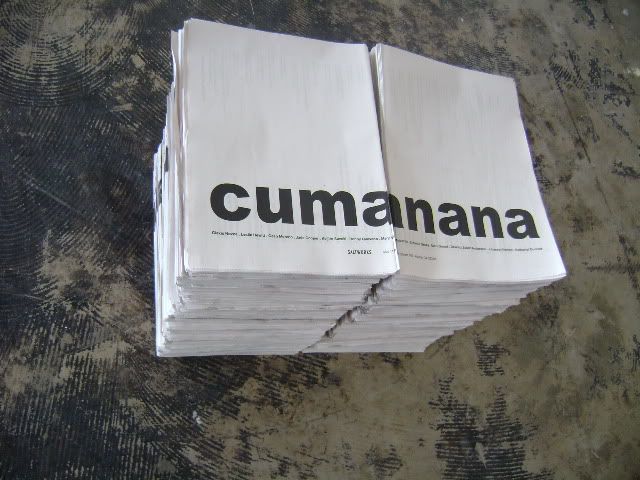
johanna almiron
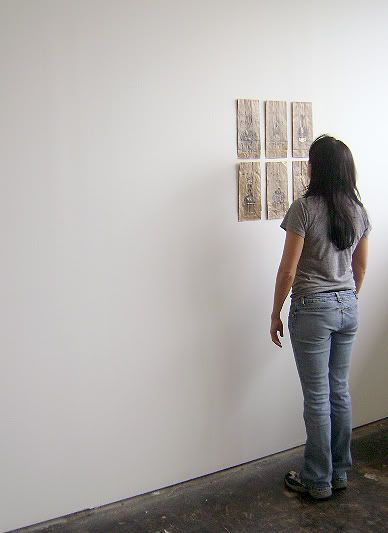
nathaniel donnett
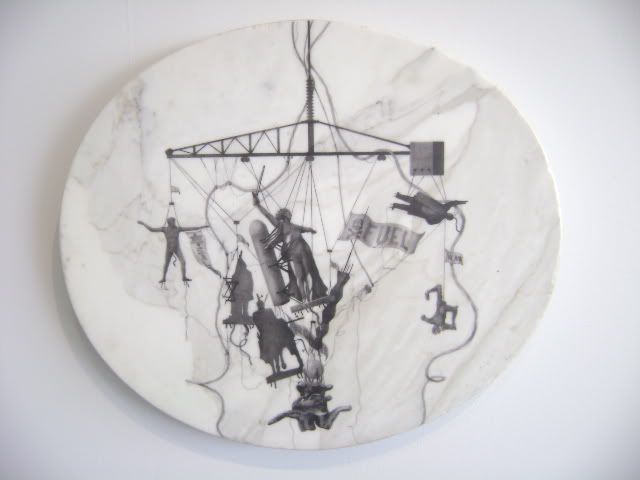
glexis novoa(detail of graphite drawing)

gean moreno +ernesto orozo(sculpture), ronnie quevedo (background framed drawings),
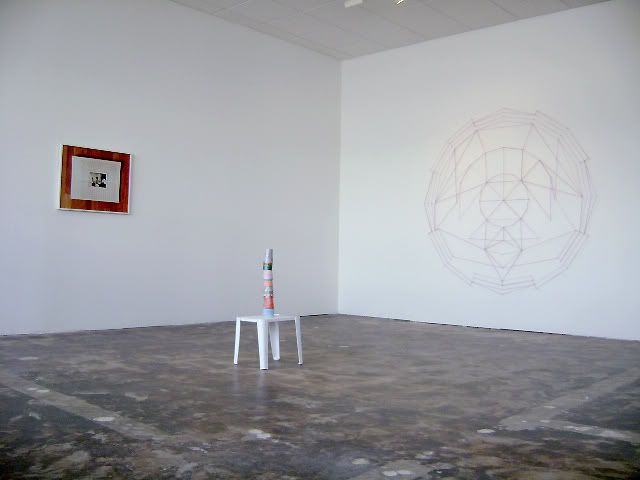
leslie hewitt(photo), ernesto oroza(free standing sculpture), mary valverde (wall sculpture)
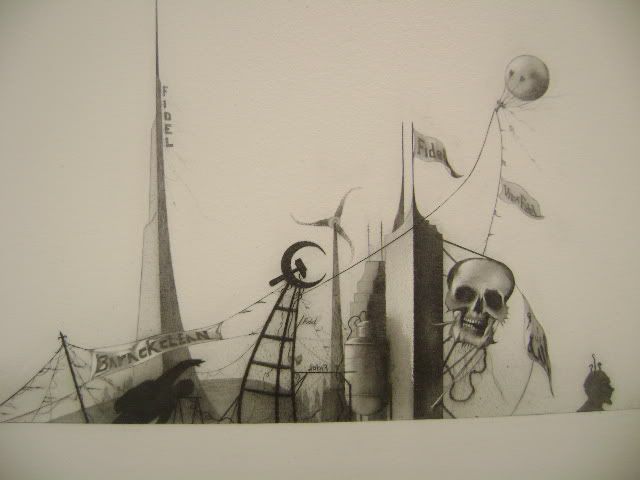
glexis novoa (wall drawing detail)
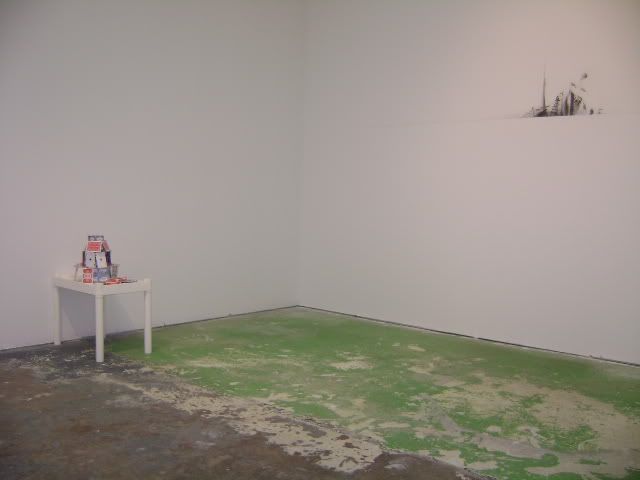
Jade Cooper (sculpture next to wall) Glexis Novoa (wall drawing)
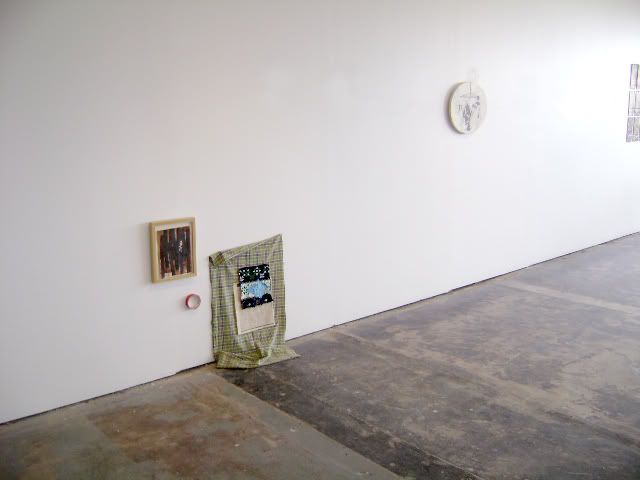
gean moreno
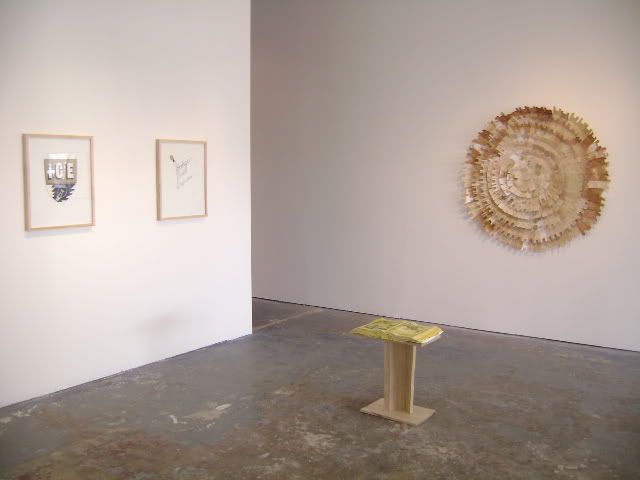
ronnie quevedo (framed drawings) jabari anderson (free standing sculpture) mari Omori (spiral wall piece)
go throw a show.
Saltworks Gallery
Atlanta, Georgia
Johanna Almiron, Dawolu Jabari Anderson,
Jade Cooper, William Cordova,
Nathaniel Donnett, Leslie Hewitt,
Gean Moreno, Glexis Novoa,
Mari Omori, Ernesto Oroza,
Ronny Quevedo, Kaijiro Suzuki,
Mary Valverde
read a review at Art Relish

johanna almiron

nathaniel donnett

glexis novoa(detail of graphite drawing)

gean moreno +ernesto orozo(sculpture), ronnie quevedo (background framed drawings),
jabari anderson (free standing)

leslie hewitt(photo), ernesto oroza(free standing sculpture), mary valverde (wall sculpture)

glexis novoa (wall drawing detail)

Jade Cooper (sculpture next to wall) Glexis Novoa (wall drawing)

gean moreno

ronnie quevedo (framed drawings) jabari anderson (free standing sculpture) mari Omori (spiral wall piece)
go throw a show.
























2 comments:
A nice and true enough thought, but not wholly correct in my opinion.
The socially insoluble is the essential attribute of meaningful work. It's the difference between fashion and style. Watch out with the heavy petting!
nice nice nice!
Post a Comment